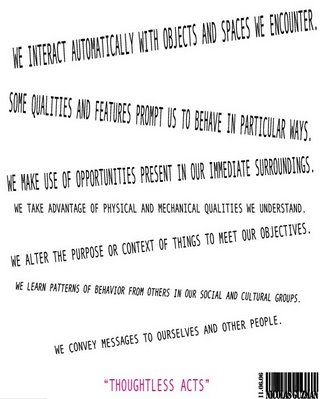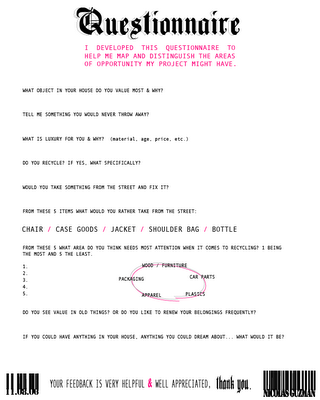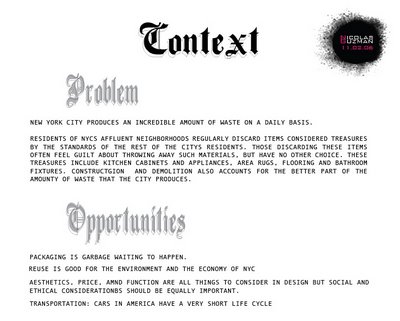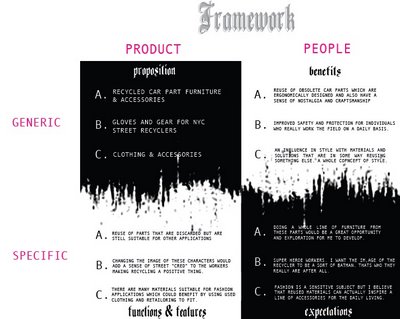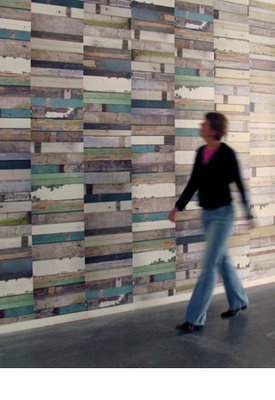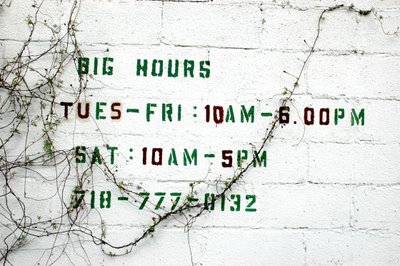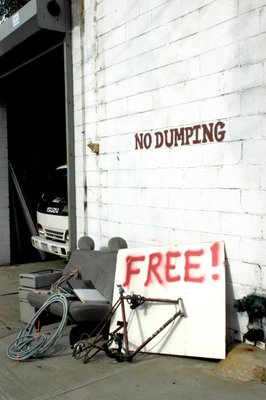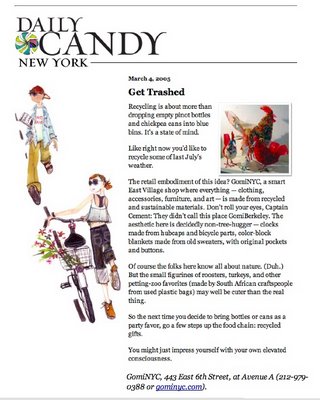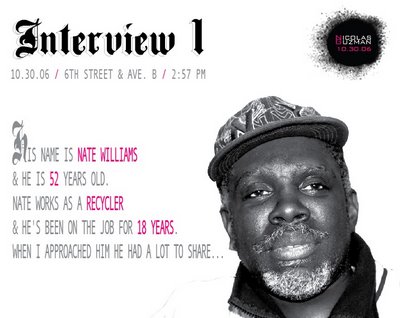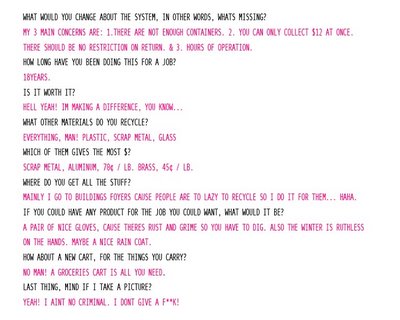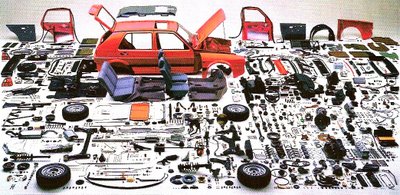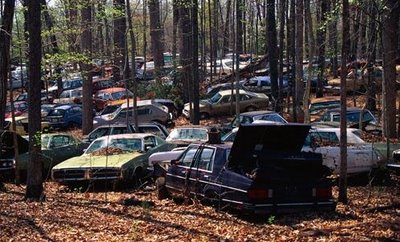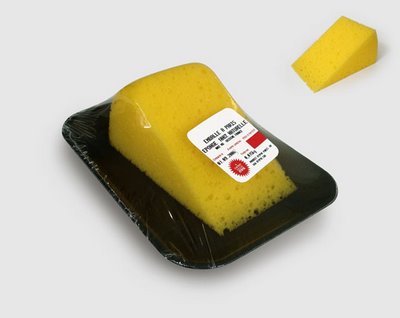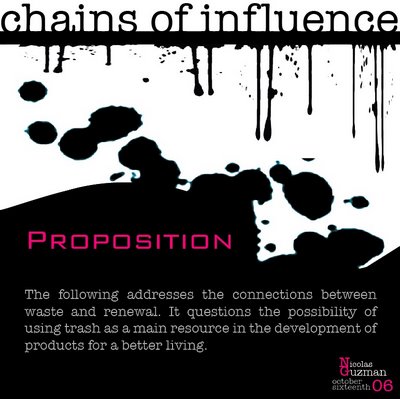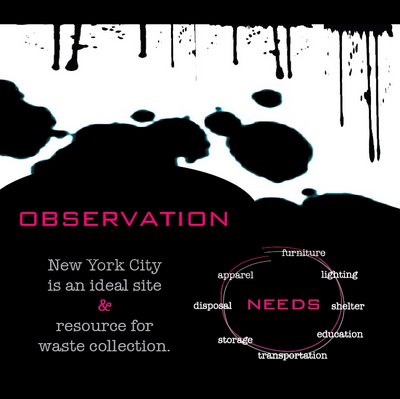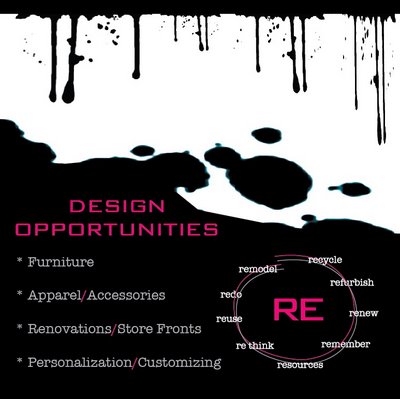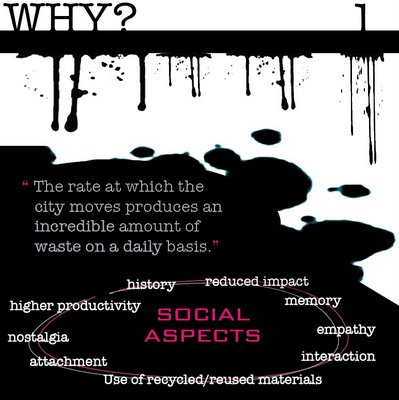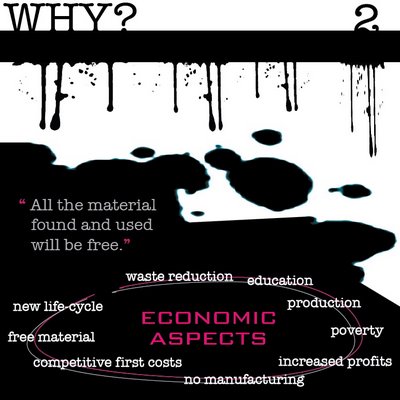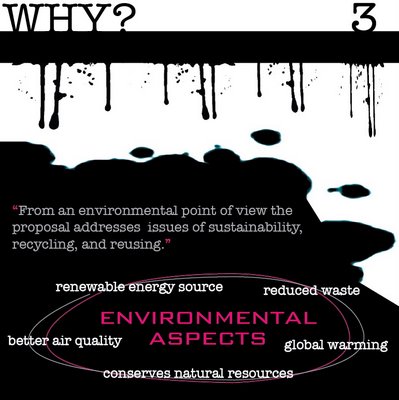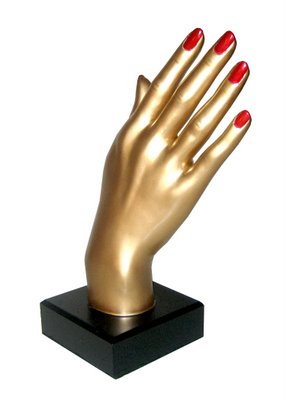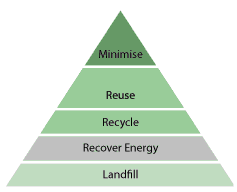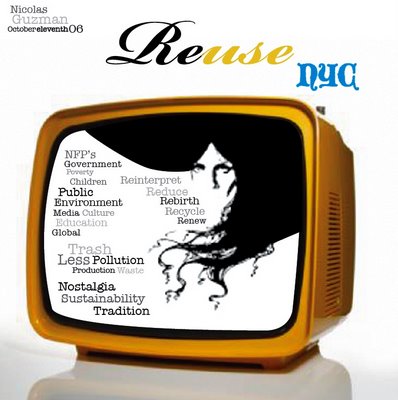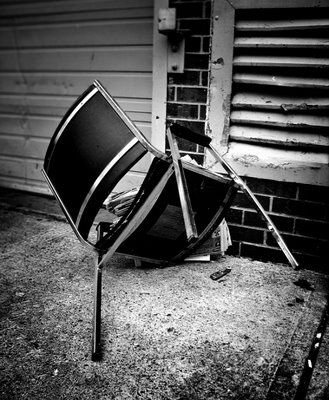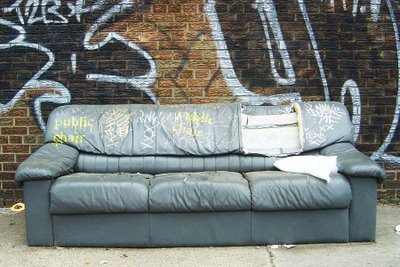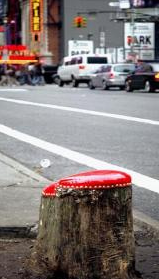
Nicolas Guzman Product Design
4.05.2007
3.16.2007
3.08.2007
3.06.2007
2.27.2007
2.14.2007
1.31.2007
1.25.2007
On the same page...

Chris Burton’s Repose Lounge is an example of his “upcycled” furniture, made from a variety of construction site waste and other miscellaneous dumpster detritus. His equally-ingenious Yield shelves provide a modular shelving system based on the order of an equilateral triangle. Yield’s various vessels are made from plywood, various wooden off-cuts, and even drywall, giving a unique texture and tactility to each unit. The Yield system was featured, along with the Repose Lounge, as part of Burton’s recent student exhibition at Savannah’s Red Kite Studio gallery.
The next time you pass by a construction site, take a closer look… you may find designer and Savannah College of Art and Design MFA student Chris Burton scouring through the debris, hunting for material for his next chair or table. His recent exhibition at Savannah’s Red Kite Studio, entitled “Upcycle of Waste,” features clever designs that utilize construction waste, dumpster debris, and other urban detritus as raw material for some lovely pieces of furniture. His Repose Lounge chair, for example, is “designed to utilize all lengths of wood used in construction.” It combines plywood with PVC piping cut-offs, which form the slats of the seat and back. Despite the discarded materials, Burton is clever in his material applications, making the most of the PVC’s flexible nature to provide a surprisingly comfortable seat.
Taking recycling to the next level, “upcycling” is Burton’s shrewd interpretation of the trash-into-treasure techniques that many green-minded designers (and we at Inhabitat) love. An environmentally-conscious Californian and ex-construction worker, Burton is inspired by the cultivation of waste into furniture pieces and usable art. We all know how much waste the construction industry produces, and it’s great to see a young designer turning one man’s trash into another man’s comfortable chair.
12.12.2006
12.11.2006
12.06.2006
11.28.2006
11.20.2006
Matrix of Factors Involved
11.17.2006
Buenos Aires: The Ghost Train of the Cartoneros



“The poor, as everyone knows, are invisible when you speed past their homes on the highway,” journalists for the Buenos Aires daily Clarín wrote on Sept. 26.
Amid all the economic statistics, amid all the talk of debt defaults and monetary policy, the people most affected by the Argentine financial crisis—poor and working-class Argentines—are almost as invisible in much of the world's reporting on the crisis. “Argentina's 35 million citizens will not be the only ones to pay a heavy price for that country's latest financial crisis,” a prestigious journal intones before going into a detailed analysis of economic policy. “Angry crowds protested outside bank buildings, a sign of growing social unrest,” an international news agency dutifully reports.
When the Argentine economy collapsed in late December 2001, the residents of José León Suárez, a neighborhood on the outskirts of Buenos Aires, were among the first to lose their jobs. In the following months many, faced with the prospect of starvation, joined piquetero organizations—informal networks dedicated to mutual aid and often destructive political protest. In José León Suárez, residents successfully lobbied the government to begin nightly train service from their community to the more salubrious neighborhoods of downtown Buenos Aires, where cartoneros—cardboard collectors—sort through the day's trash in search of recyclable material that can be exchanged for money. Today, according to the International Red Cross, some 2,000 cartoneros use the train. Volunteers staff a nursery school so that children will have a safe place to be while their parents are at work every night.
In the evening, the cartoneros pile on to a government-supplied train, a stripped-down wreck without seats, heat for the winter, or air-conditioning for the summer. El Tren Blanco, or the “white train,” as most cartoneros call it, leaves downtown Buenos Aires before dawn. Most Argentines never see the cartoneros. Aware of their invisibility, the cartoneros have taken to calling the train El Tren del Fantasma, or the “Ghost Train.”
In a special report for World Press Review online, Italian photojournalist Andrea Di Martino chronicled the Ghost Train's voyage one night in August 2002.
—Elijah Zarwan, Web editor
11.15.2006
11.08.2006
11.05.2006
Questionnaire
Matrix Diagram
Bling Bling
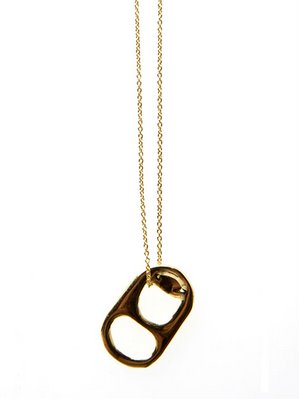
Check out this necklace by Thorn NYC.
Proof that a scrap can be beautiful when its context is changed. A Soda Lid reborn into a Subtle Accessory.
Here's the link to their page:
11.04.2006
11.02.2006
Recycled Bike Furniture by Frida Ottemo Kallstrom
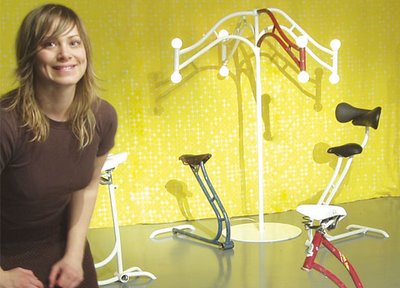
"There is something special about bicycles. Any bike enthusiast will tell you that their bicycle is not merely a means of efficient transportation, but practically an extension of their body. But what happens when that once cherished two-wheeled friend has outrun its course?
Swedish designer Frida Ottemo Kallstrom resolves this dilemma with unique designs that will keep the cherished memories of your favorite bicycle intact even after its well-worn parts have deteriorated. She debuted her collection of recycled bicycle furniture at the Salone Satellite show in Milan this past April."
inhabitat 11.02.06
11.01.2006
Salvage NY
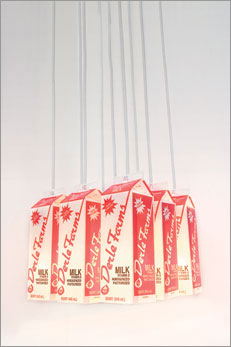
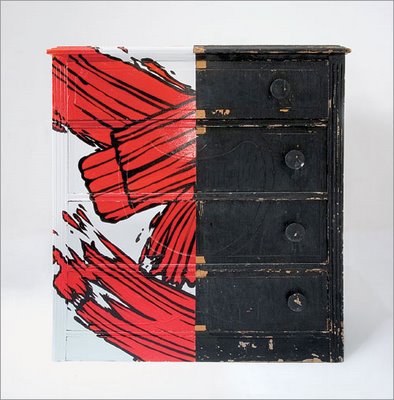
These are images from an article that came out in Time Out a couple of days ago. They are a group of designers in NY who go around town and pick up trash. They give each piece a new life though design and then auction them online. They are working in collaboration with Housing Works which is a Non for Profit organization that works as a vintage/ antique shop which raises funds and awareness for the cause of HIV AIDS.
Click on the link in the articles column if you want to visit the auction.
10.22.2006
Deconstruction
Deconstruction is construction in reverse:
Carefully dismantling buildings and saving the materials to be reused instead of sending them to a landfill. Demolition creates waste, but deconstruction creates jobs, reusable materials - and tax deductions.
Deconstruction is a cost-effective way to remove residential and commercial structures while maximizing material recovery. Performed mostly by hand, this method can result in the salvage of up to 85% of a building’s material for reuse.
Deconstruction is a greener alternative and it:
Reduces the environmental impact of construction practices
Conserves landfill space by reusing quality-building material
Creates new job opportunities in a developing field
Carefully dismantling buildings and saving the materials to be reused instead of sending them to a landfill. Demolition creates waste, but deconstruction creates jobs, reusable materials - and tax deductions.
Deconstruction is a cost-effective way to remove residential and commercial structures while maximizing material recovery. Performed mostly by hand, this method can result in the salvage of up to 85% of a building’s material for reuse.
Deconstruction is a greener alternative and it:
Reduces the environmental impact of construction practices
Conserves landfill space by reusing quality-building material
Creates new job opportunities in a developing field
10.15.2006
10.14.2006
Waste Facts
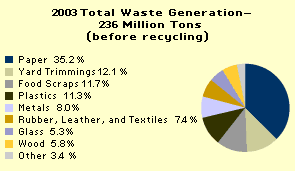
U.S. residents, businesses, and institutions produced more than 236 million tons of waste in 2005.
That's approximately 4.5 pounds of waste per person per day.
Approximately 136 million tons of construction and demolition waste is generated every year
About 4 billion pounds of carpet is land-filled every year.
10.13.2006
Design should be...
Friendly, human, characterful, humorous, playful, surprising, new, leading-edge,
thought provoking, questioning, open and receptive, optimistic, positive, inspirational,
provocative, challenging, multi-sensory, inclusive, accessible
thought provoking, questioning, open and receptive, optimistic, positive, inspirational,
provocative, challenging, multi-sensory, inclusive, accessible
10.12.2006
Plotting a New Course
Today’s society moves at a remarkable rate and we consume without even realizing the impact we create. Technology & communication have advanced at a remarkable rate during recent years making us forget about the effort of producing things. New products are made everyday and tons of others are discarded and replaced with “newer”, “better” alternatives.
Such short cycle of consumption affects the environment and society. We are conditioned to consume and trends seem to replace themselves sooner and sooner everyday. The media feeds our brain with thousands of possibilities: What to eat, what to wear, what to drive, where to go, etc.
I’m interested in exploring the emotional relationship between design and people. Through design we can raise awareness and show people how an object can be born from something that has been discarded. Reusing saves time, money, energy and resources. It is a sustainable alternative and my intent is to rethink and challenge the idea of garbage as waste. The idea is to develop products based on the concept of "reusing" and to explore the wide range of possibilites the subject might offer.
Such short cycle of consumption affects the environment and society. We are conditioned to consume and trends seem to replace themselves sooner and sooner everyday. The media feeds our brain with thousands of possibilities: What to eat, what to wear, what to drive, where to go, etc.
I’m interested in exploring the emotional relationship between design and people. Through design we can raise awareness and show people how an object can be born from something that has been discarded. Reusing saves time, money, energy and resources. It is a sustainable alternative and my intent is to rethink and challenge the idea of garbage as waste. The idea is to develop products based on the concept of "reusing" and to explore the wide range of possibilites the subject might offer.
10.11.2006
Subscribe to:
Posts (Atom)













